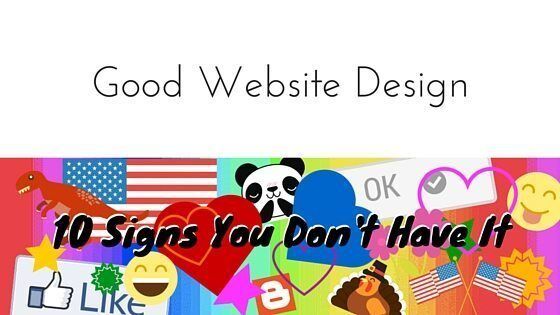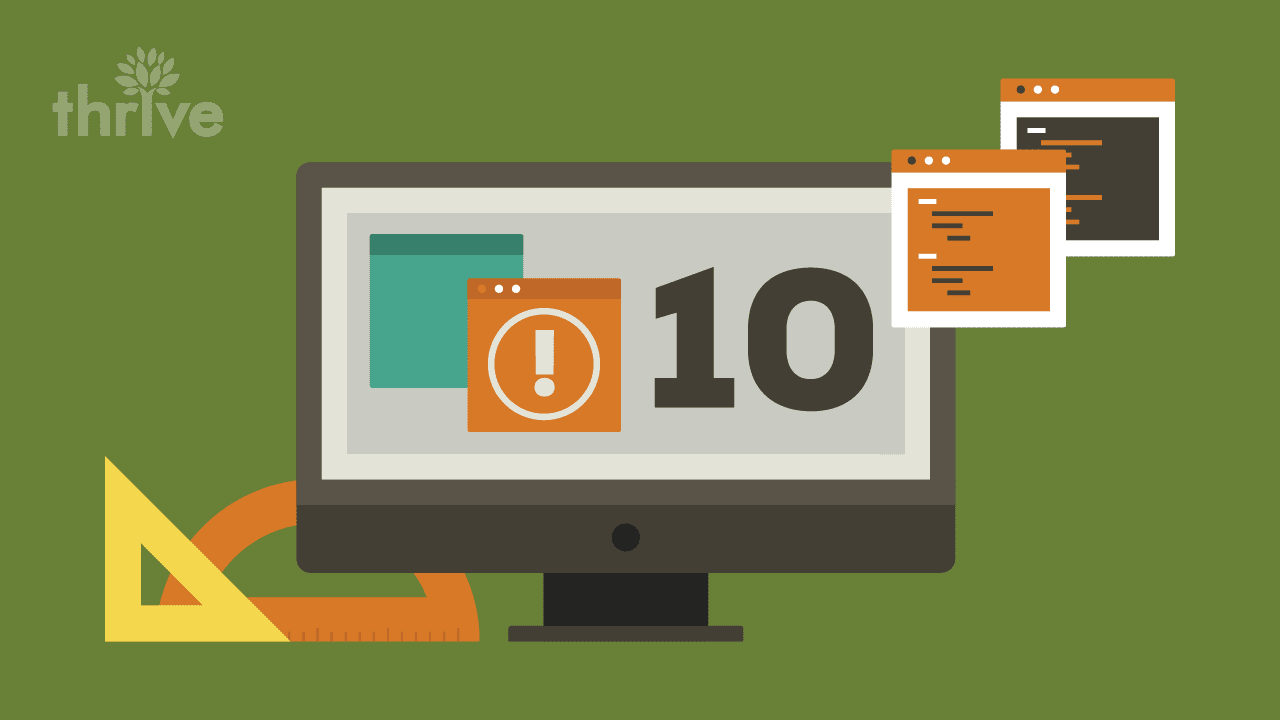
Congratulations, traffic counts are jumping higher every day! But you still aren’t making money. You might want to check on your metrics for repeat visitor percentage and average session length. If these numbers are very low, it means visitors are leaving quickly and not coming back. Lack of good web design spoils the best marketing efforts. Here are ten mistakes to avoid if you want to hold the interest of visitors.
10 Signs You Might Be Bad At Good Website Design
Do people hate your website design? Have you noticed web traffic trends that show visitors entering your site and leaving like their lives depend on it? One of these factors could be the reason:
1. Spelling and Grammar
Proofread all content. Then, have somebody else proofread it. Don’t rely on spell checkers, since a spelled word can have a different meaning when spoken (called homonyms – using the wrong word is the most common mistake). Sloppy writing forfeits respect.
2. Too Much Flash
Clip art and animations look engaging, but if they don’t serve a purpose, they distract from the message. Keep a professional look. Also, some graphics might not display correctly on mobile devices. One difference between good and bad websites is to use graphics sensibly. Keep things organized and uncluttered.
3. Too Technical
Unless your target audience is industry professionals, don’t use complicated explanations and technical jargon. It may sound impressive but will turn away people who don’t understand it.
4. It doesn’t work!
Nothing frustrates users – or looks less professional – than having them click a button or link that does nothing. Be sure everything on your site does what it’s supposed to do. Check them from time to time to make sure it all works, or sites you’ve linked to haven’t disappeared.
5. Bad Information
Don’t use info from 1995 just because it sounds good and makes your point. If you’re using statistics or references, make sure they’re current. This is especially true for phone numbers and prices – your users won’t like it if you mislead them or send them on a wild goose chase.
6. Fancy Fonts and Colors
Yes, plain black text on a white background can look boring, but you have a website, not an art gallery. Unless that’s somehow appropriate, avoid bright color schemes that are hard on the eyes. That includes fancy fonts – use different fonts for headings and subheadings, but keep things consistent. You want to impress people with your information, not your fonts.
7. Weak Structure
Make navigating your site simple and intuitive. Don’t put your pages in directories four or five levels deep. Don’t force your users to keep hitting the back button over and over to return to the home page. Load times and repetition could make this an unpleasant experience that drives them away. Good website design means menu bars and clearly visible, appropriately labeled buttons so the user can quickly navigate to whatever part of your site catches their interest.
8. Obscure Intentions
If the purpose of your site is to get users to do something – buy a product, submit a form, take a poll, whatever – make it clear what you want them to do. One difference between good and bad websites is that you don’t just throw out some information and some buttons and hope they get the message. Make it clear what they should do next, and provide easily visible, clearly labeled links to lead them there.
9. On-site Search
A lot of pages have a search box. Make sure yours works, and works well. Nothing is worse than frustrating visitors with useless searches. If your site has a search box that doesn’t cut it, find a different one. Consider adding keywords users might be searching for.
10. Big Blocks of Text
If information isn’t readable, it’s useless. Those 1,200-word pages of text make visitors feel like they’re about to climb a hill. Trim it down to make your points, but keep it natural, informative, and engaging. Break it up into shorter sentences and shorter paragraphs with line breaks and subheadings to help them find what they want. The same goes for forms – keep them simple, and don’t require a lot of mandatory fields or personal information.
So where does your site fall on the good and bad website design scale?
You only have a few seconds to engage visitors and direct their attention to where you want it to go and good website design is how you make it happen. If your site is performing poorly or if you’re struggling with a high bounce rate, we can help! Contact us for a free consultation and see how good website design makes all the difference!

